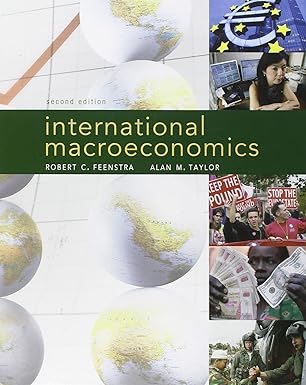2. Use the money market and foreign exchange (FX) diagrams to answer the following questions. This question
Question:
2. Use the money market and foreign exchange
(FX) diagrams to answer the following questions.
This question considers the relationship between the Indian rupee (Rs) and the U.S.
dollar ($). The exchange rate is in rupees per dollar, ERs/$. On all graphs, label the initial equilibrium point A.
a. Illustrate how a permanent increase in India’s money supply affects the money and FX markets. Label your short-run equilibrium point B and your long-run equilibrium point C.
b. By plotting them on a chart with time on the horizontal axis, illustrate how each of the following variables changes over time (for India): nominal money supply MIN, price level PIN, real money supply MIN/PIN, interest rate iRs, and the exchange rate ERs/$.
c. Using your previous analysis, state how each of the following variables changes in the short run (increase/decrease/no change):
India’s interest rate iRs, ERs/$, expected exchange rate Ee Rs/$, and price level PIN.
d. Using your previous analysis, state how each of the following variables changes in the long run (increase/decrease/no change relative to their initial values at point A): India’s interest rate iRs, ERs/$, Ee Rs/$, and India’s price level PIN.
e. Explain how overshooting applies to this situation.
Step by Step Answer:

International Macroeconomics
ISBN: 978-1429241038
2nd Edition
Authors: Robert C. Feenstra ,Alan M. Taylor






